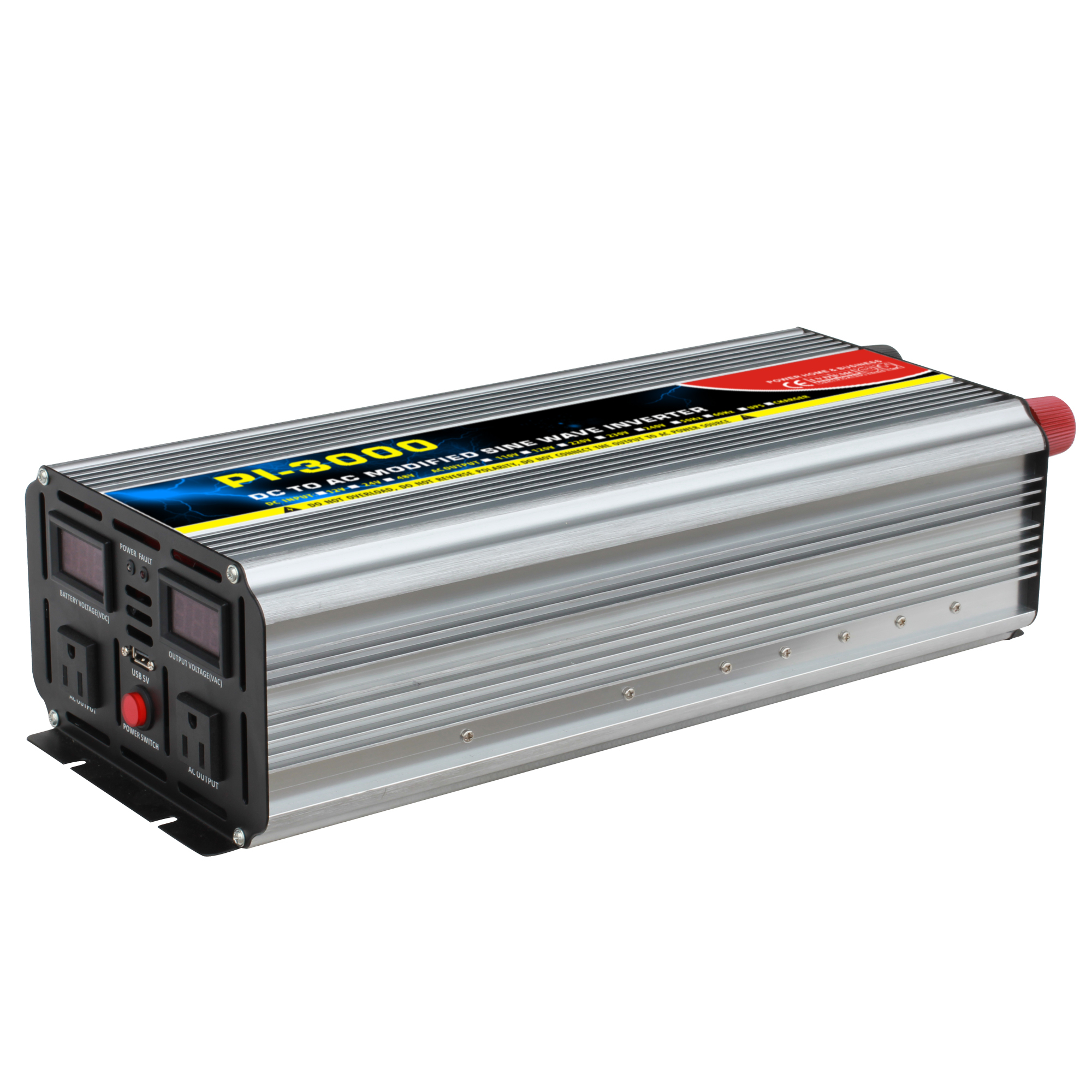A sine wave inverter is a power electronic device that converts DC power into AC power. Inverter and ACDC converter are opposite processes. The photovoltaic inverter is one of the important system balances in the photovoltaic array system, and it can be used with general AC power supply equipment.
Photovoltaic inverters can convert variable DC voltage generated by photovoltaic solar panels into AC power at mains frequency, which can be fed back to commercial power transmission systems or used by off-grid power grids.
Centralized inverter: Several parallel photovoltaic strings are connected to the DC input of the same centralized inverter(types of ups online and offline). Generally, three-phase IGBT power modules are used for higher power, and field-effect transistors are used for lower power. DSP converts the controller to improve the quality of the generated electric energy, making it very close to the sine wave current, and is generally used in the system of large photovoltaic power stations (>10kW).

The biggest feature is the high power and low cost of the system. However, because the output voltage and current of different photovoltaic strings are often not completely matched (especially when the photovoltaic strings are partially shaded due to cloudy, shade, stains, etc.), a centralized The method of change will lead to a decrease in the efficiency of the inverter process and a decrease in the energy of the electricity users.
At the same time, the power generation reliability of the entire photovoltaic system is affected by the poor working status of a photovoltaic unit group. The latest research direction is the use of space vector modulation control and the development of new inverter topology connections to obtain high efficiency under partial load conditions.
String inverter: Based on the modular concept, each photovoltaic string (1-5kw) passes through an inverter, has maximum power peak tracking at the DC end, and is connected in parallel at the AC end, which has become now The most popular inverter in the international market.
Many large photovoltaic power plants use string inverters. The advantage is that it is not affected by module differences and shadows between strings, and at the same time reduces the mismatch between the optimal operating point of the photovoltaic module and the inverter, thereby increasing the power generation. These technical advantages not only reduce system costs but also increase system reliability. At the same time, the concept of "master-slave" is introduced between the strings, which makes the system connect several PV strings together and let one or several of them work when a single string of electric energy cannot make a single inverter work. , Thereby producing more electricity.
Micro-inverter: In the traditional PV system, the DC input of each string inverter will be connected in series by about 10 photovoltaic panels. If one of the 10 panels connected in series does not work well, this string will be affected. If the inverter uses the same MPPT for multiple inputs, each input will also be affected, greatly reducing the power generation efficiency.
In the PV system of the micro-inverter, each panel is connected to a micro-inverter. When one of the panels does not work well, only this one will be affected. All other photovoltaic panels will run in the best working condition, making the overall system more efficient and generating more power. In practical applications, if the string inverter fails, it will cause the panels of several kilowatts to fail to function, and the impact of the failure of the microinverter is quite small.
Power optimizer: The installation of a power optimizer in a solar power generation system can greatly improve the conversion efficiency and simplify the inverter (Inverter) function to reduce costs. In order to realize a smart solar power generation system, the device power optimizer can ensure the best performance of each solar cell and monitor the battery consumption status at any time. The power optimizer is a device between the power generation system and the inverter. The main task is to replace the original best PowerPoint tracking function of the inverter.
The power optimizer uses an analogy to perform extremely fast best PowerPoint tracking scans by simplifying the circuit and a single solar cell corresponds to a power optimizer so that each solar cell can indeed achieve the best PowerPoint tracking, In addition, it can monitor the battery status anytime and anywhere by inserting a communication chip, report problems in real-time, and allow relevant personnel to repair as soon as possible.